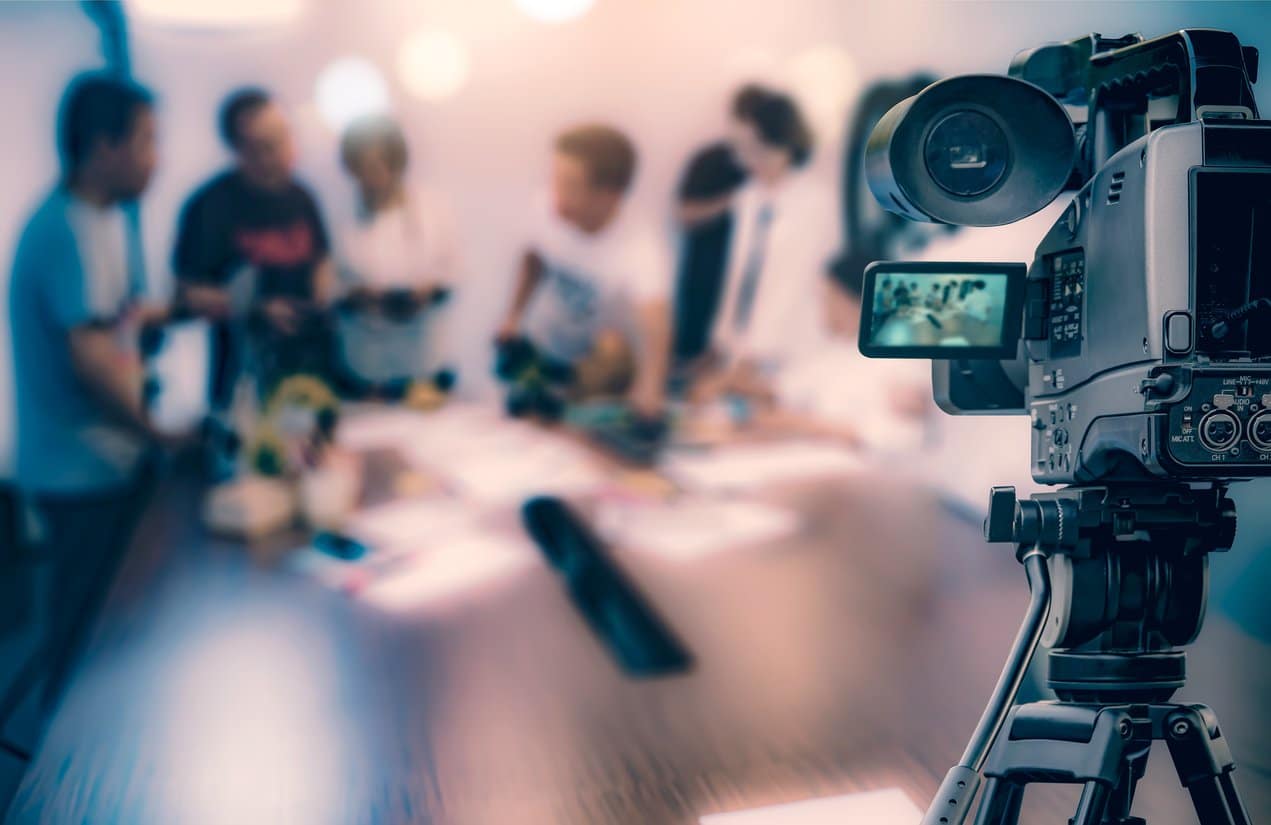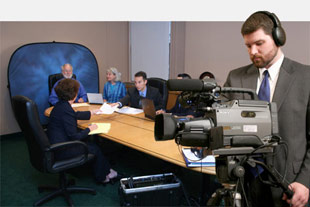Key Aspects to Consider When Working With Legal Videography Professionals
Key Aspects to Consider When Working With Legal Videography Professionals
Blog Article
Delving Into the Devices of Lawful Videography: Introduction Its Procedure in Shielding Genuine Visual Statement for Judicial Procedures
In the realm of judicial proceedings, the role of lawful videography stands as a keystone in maintaining and offering visual evidence. As technology proceeds to advance, the devices behind lawful videography have come to be significantly complex, providing a vital layer of authenticity to testimonies recorded on video clip. By delving into the functional ins and outs of legal videography, one can uncover the thorough processes that safeguard the honesty of visual proof provided in courtrooms - Legal Videography. This expedition not only clarifies the historical evolution of legal videography yet also hints at the future trends that may further change exactly how visual testaments are maintained in the realm of justice.
Historic Advancement of Legal Videography
Taking a look at the historical progression of lawful videography discloses a significant improvement in the recording and presentation of visual proof within the lawful landscape. In the past, legal proceedings greatly relied upon composed photographs and transcripts to document occasions and give evidence. However, with the development of video clip modern technology, the legal industry saw a standard change in just how aesthetic testimony was captured and provided.
The development of lawful videography can be mapped back to the late 20th century when innovations in video clip recording equipment made it more available for use in courts. This technological improvement not only improved the accuracy and dependability of visual evidence but also transformed the way cases were presented to courts and courts (Legal Videography). Lawyers began to recognize the persuasive power of video recordings in sharing feelings, subtleties, and non-verbal hints that composed transcripts or photographs alone might not record properly

Innovation Innovations in Video Documents
What vital technological innovations have reinvented video documents in the lawful area? The legal field has seen considerable developments in video clip documentation innovation that have actually boosted the credibility and integrity of visual proof in judicial process. One of the essential innovations is high-def (HD) video clip recording capacities, which give crystal-clear images and sharp information that are critical for precisely capturing statements, faces, and other aesthetic hints. In addition, the integration of timestamping and metadata functions in video clip documents devices has made it possible for specific paperwork of when and where the video clip was recorded, making sure the stability of the proof presented in court.
Additionally, developments in video clip encryption and watermarking modern technologies have boosted the safety and security and tamper-proof nature of video clip proof, protecting it versus unauthorized modifications or meddling. Furthermore, the development of cloud storage space services and remote gain access to capacities has streamlined the storage, access, and sharing of video clip evidence, assisting in smooth collaboration among attorneys and making certain effective accessibility to critical visual statements when required. These technological improvements in video clip documents have actually undoubtedly revolutionized the legal field, enhancing the precision, reliability, and admissibility of visual evidence in judicial proceedings.
Duty of Lawful Videographers in Court Room Setups
The development of video paperwork modern technology in the lawful area has actually demanded a vital role for lawful videographers in court room setups, guaranteeing the integrity and reliability of aesthetic statements presented throughout judicial process. Lawful videographers play a fundamental duty in recording and protecting exact aesthetic evidence that can be crucial in litigation. Their duty reaches setting up equipment, tape-recording process, and creating premium videos that precisely reflect the occasions in the court.
Additionally, legal videographers usually work carefully with lawful groups to ensure that the video evidence lines up with the instance's needs and can be effectively presented in court to support the legal debates being made. Overall, the role of legal videographers in check these guys out court settings is vital in upholding the principles of justice and ensuring the openness of lawful process. Legal Videography.

Ensuring Admissibility and Integrity of Video Proof
To keep the trustworthiness of aesthetic proof presented in legal process, ensuring the admissibility and integrity of video proof is a critical responsibility for legal videographers. Admissibility describes the approval of proof by the court, and for video clip evidence to be admissible, it should satisfy particular standards. Legal videographers play an essential function in making sure that the video clips they record comply with the guidelines of evidence, click for info such as credibility, dependability, and significance.
Stability of video clip evidence includes preserving the originality and accuracy of the footage from the time it is recorded till it exists in court. This consists of firmly saving the video clip data, documenting the chain of custodianship, and stopping any type of tampering or alterations. Legal videographers have to stick to rigorous methods to assure the honesty of the video clip proof and protect against any kind of obstacles to its authenticity.
Future Trends in Legal Videography
Given the increasing dependence on innovation in legal proceedings, lawful videographers are positioned to embrace innovative innovations forming the future of visual testament capture and discussion. One of the noticeable fads coming up is the integration of digital truth (VIRTUAL REALITY) and increased truth (AR) innovations into lawful videography. These innovations have the potential to revolutionize exactly how visual proof is provided in courtrooms, enabling discretionary to immerse themselves in the scene of the criminal activity or occurrence.
Furthermore, making use of synthetic knowledge (AI) algorithms for video evaluation is expected to simplify the process of assessing and evaluating huge amounts of video clip footage. redirected here AI can aid in determining vital moments, abnormalities, and patterns within videos, improving the performance of legal examinations.

Conclusion
Finally, legal videography has actually played a critical function in giving authentic aesthetic evidence for judicial process. Through technical developments and the expertise of legal videographers, the honesty and admissibility of video proof are ensured in court room settings. As legal videography proceeds to evolve, it will certainly be necessary to maintain standards that preserve the precision and reliability of visual testament for the future of legal procedures.
Checking out the historic progression of legal videography exposes a significant transformation in the catching and discussion of visual evidence within the legal landscape.The advancement of video clip documentation innovation in the lawful area has actually necessitated a vital duty for lawful videographers in courtroom settings, making sure the honesty and integrity of aesthetic testimonies provided during judicial procedures. Furthermore, lawful videographers often work closely with legal teams to guarantee that the video proof aligns with the situation's needs and can be effectively presented in court to support the legal arguments being made.To maintain the trustworthiness of visual evidence presented in legal proceedings, guaranteeing the admissibility and integrity of video evidence is a critical responsibility for lawful videographers. As lawful videography proceeds to progress, it will certainly be vital to maintain requirements that preserve the accuracy and dependability of aesthetic statement for the future of lawful proceedings.
Report this page